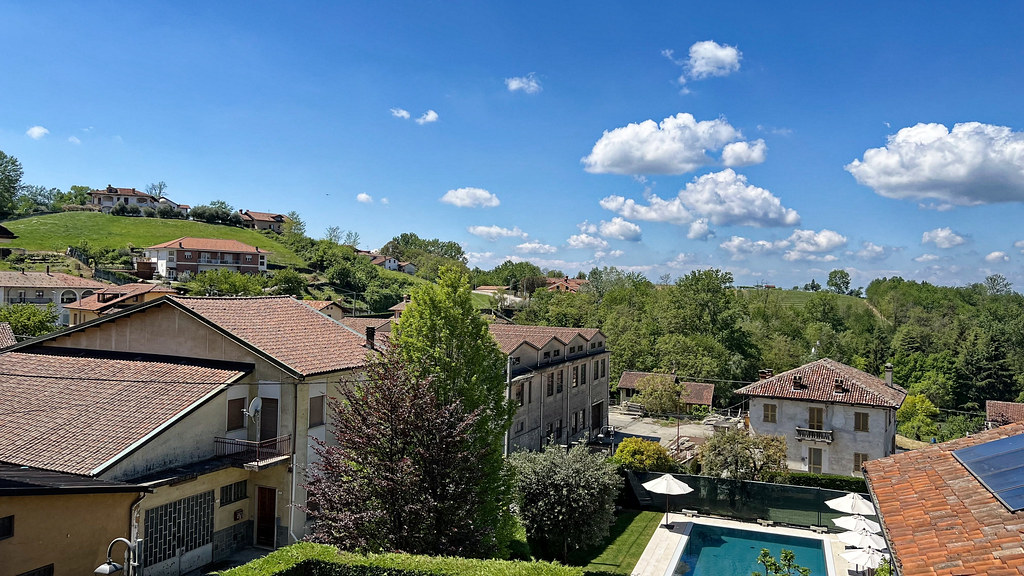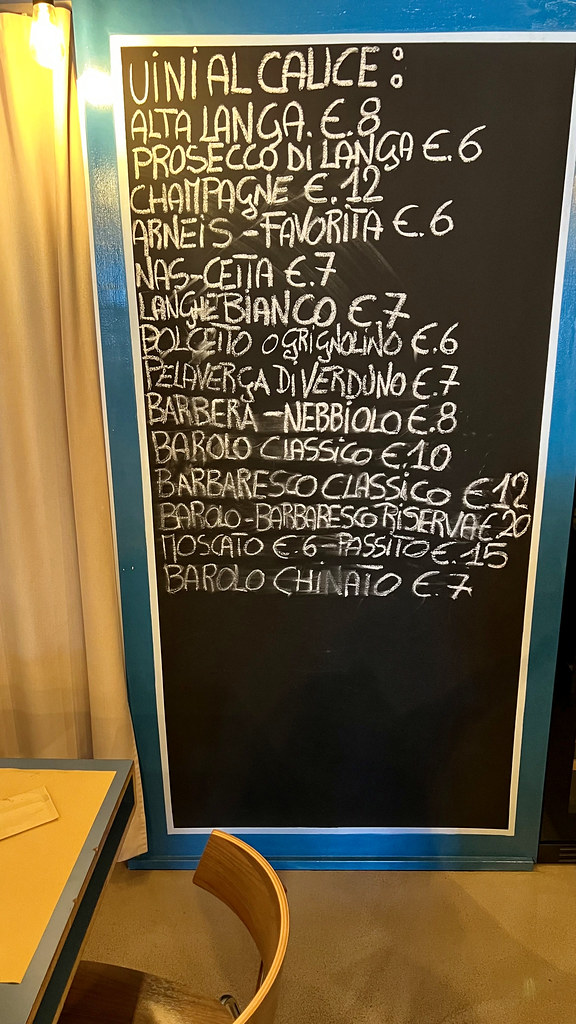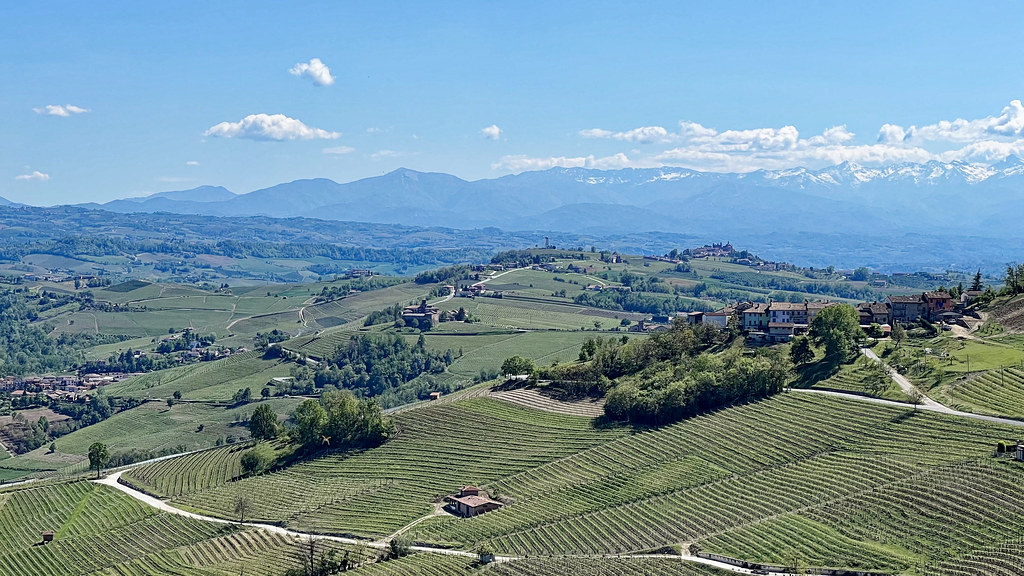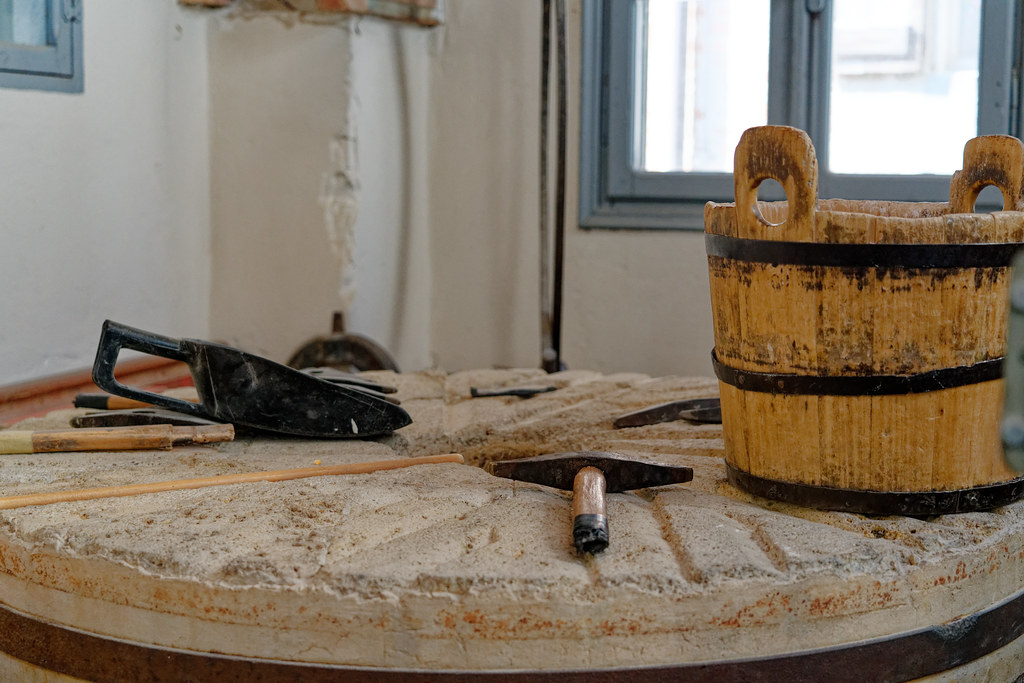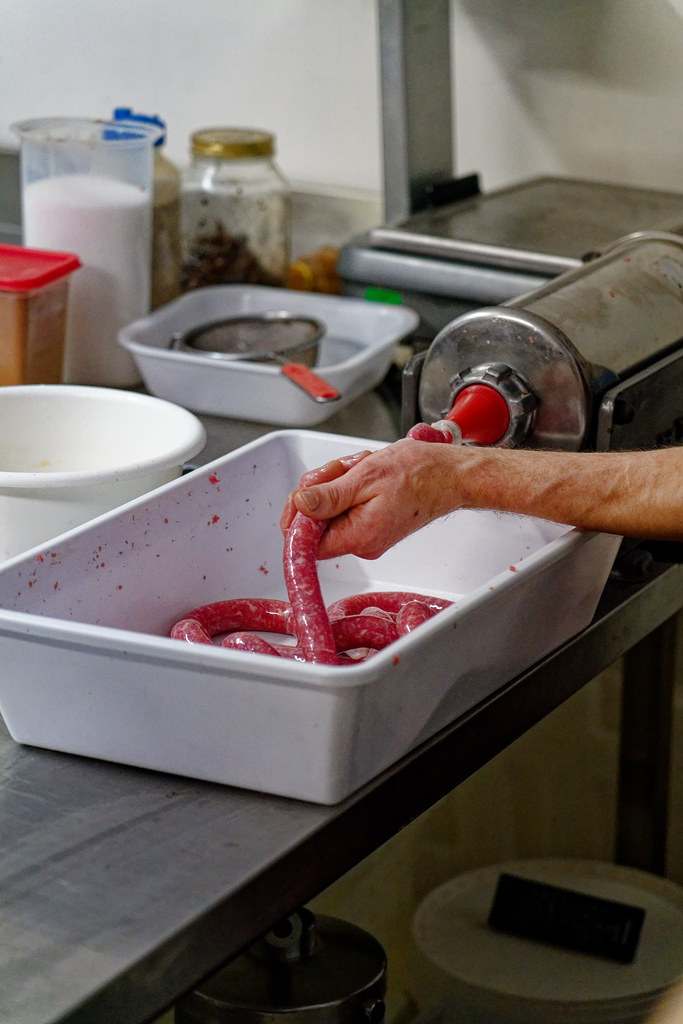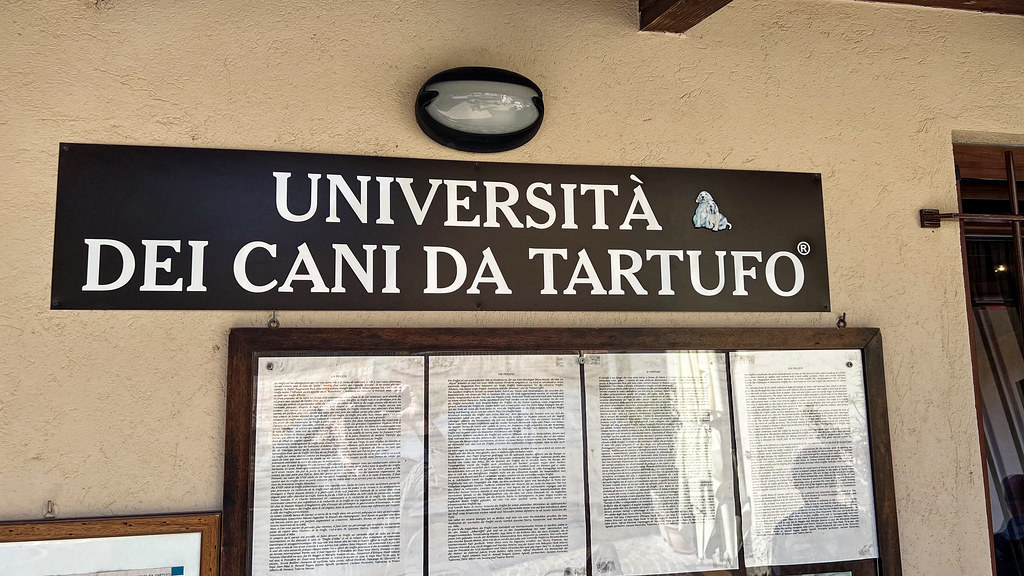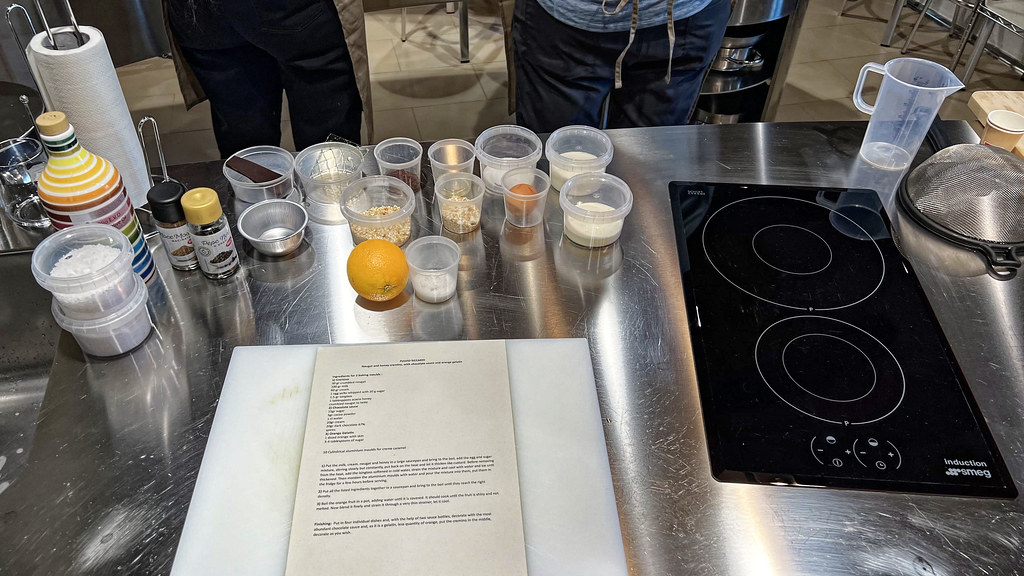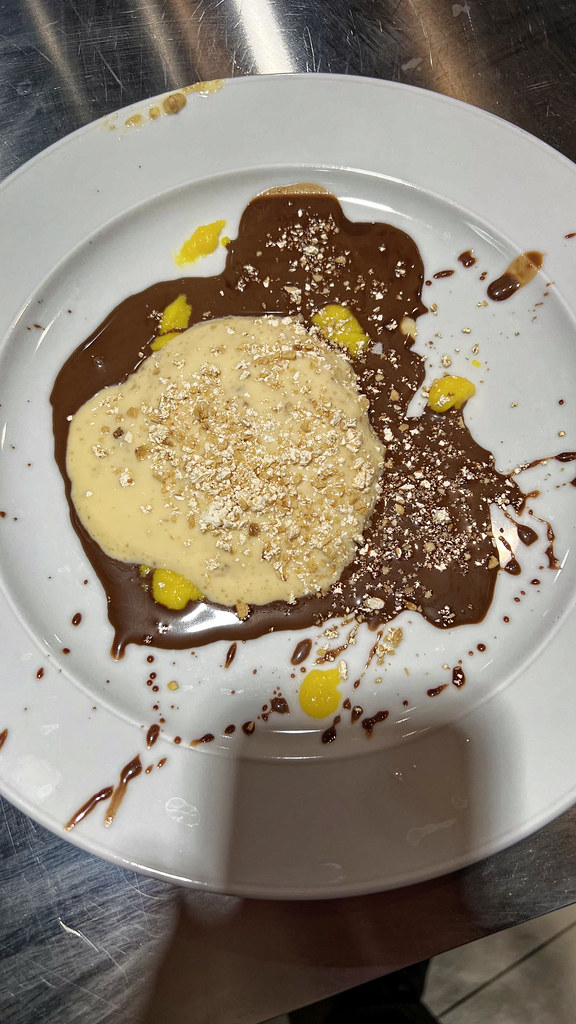May 3, La Morra
We checked out of the Milan hotel and the five of us, now including Paul, the husband of Bud's late cousin, piled into a van to take us to the Milan airport where we were to meet up with (most of) the rest of the Venissimo tour, including Rob from Venissimo, whom we had met on the 2022 Southwest France tour, and Sandro, a wine expert who was to be our local guide for the trip. Bud and Gingy knew Sandro from their previous Italy tour with Venissimo, and spoke highly of him.
All of us then took a minibus to our first hotel, Corte Gondina in La Morra, part of the Barolo wine region. As it was around 1PM after we all checked in, we walked up the hill to a small cantina Sandro had recommended and had a delicious lunch with some local wines. At 6PM the hotel served us sparkling wine and various appetizers as we introduced ourselves to others.
Then it was partway up the hill again to a restaurant for a multi-course "welcome dinner". The food was all local specialties, with an antipasti of veal tartare and another item with lightly-cooked veal. (Veal is very common in the Langhe region, and the farmers treat the cattle well.) There was a cod dish, risotto with asparagus, and more. The problem, though, was that the time between courses was so long that it was going on 10PM before the main dish was served. We were not only full, but about to fall asleep, Most of the others had flown in just that day and were undoubtedly jet-lagged. Leslie and I excused ourselves and headed back to the hotel; we later heard that others didn't get back until midnight.
May 4, Cuneo Area
After a leisurely breakfast, the group headed out for our first stop at Mulino Sobrino, a family-run flour mill that sources all its grain locally and uses equipment as much as a hundred years old. In this sense it is a lot like Moulin de Porchères, which we visited in Libourne, France, last year, and a lot of the equipment looked familiar. One major difference is that Sobrino is in active production.
Next it was on to Cherasco to visit the historic butcher shop, Macelleria Graziano, where we got to see "how the sausage is made", along with a tasting. This sausage was made to eat freshly made and uncooked.
We made a stop for lunch in the town of Alba, where an unassuming building front housed a magnificent church inside.
Next, we visited a school for training truffle-hunting dogs and got a lesson in how truffles are harvested. Some of the methods described contradicted what we had been told during our visit to a truffle farm in Pettino, but the dogs we saw there were cute.
Last on today's agenda was a cooking class in Roddi, where we were to prepare a three-course meal. We paired-up at cooking stations, each equipped with an induction cooktop, utensils, and pre-measured ingredients. A video monitor would allow us to watch the chef as he went through the steps, and printed recipes were provided for reference. Sounds great, right?
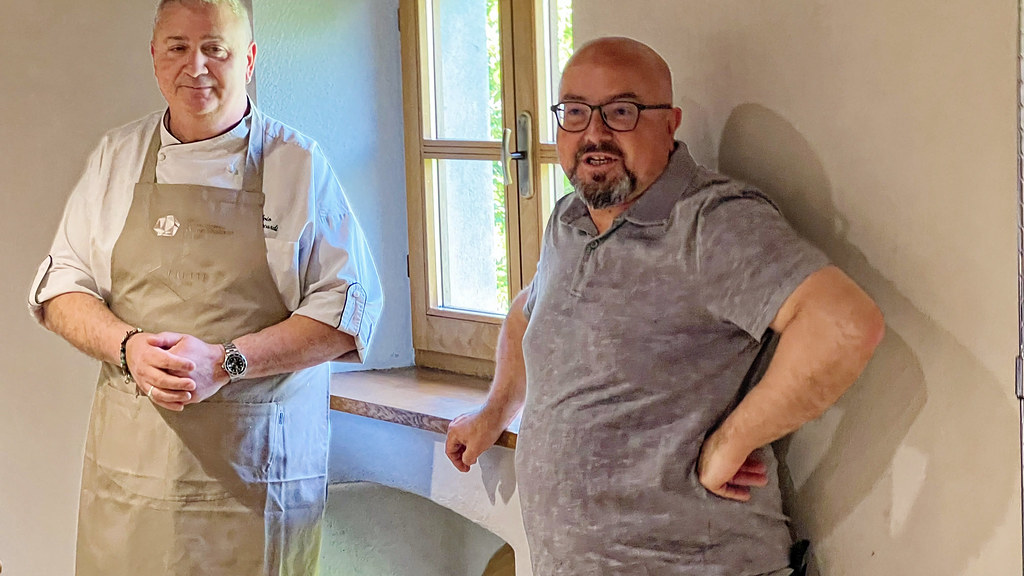
Quickly, problems ensued. The printed recipes didn't match what we were to make, ingredients that could be confused were unlabeled (especially cups that had differing amounts of the same thing), and the induction controls would change themselves when a pan was nearby. Worse, the chef didn't stay in view of the camera and instead would be wandering the room, yelling at people when they didn't do things right. He had young women trying to help people, but often the advice would be contradictory..
Many of us were already hungry when the class started, but it was two hours before we could eat the first course, and another hour for the main. It wasn't all bad - we did get to make pasta from scratch, using a manual pasta maker to roll the sheets out thinly, and then to cut it into strips. It was difficult to prepare and then cook all the vegetables in the time allotted, which was frustrating. The dessert we made, sort of a panna cotta, looked bad but tasted OK. Afterward, the chef admitted that he had not taught a multi-course meal before. It's not clear that we learned anything useful from this.
